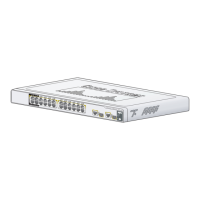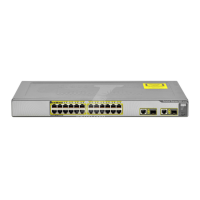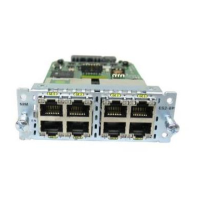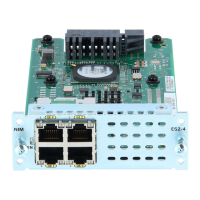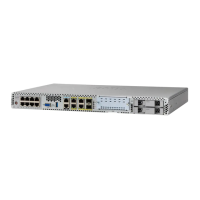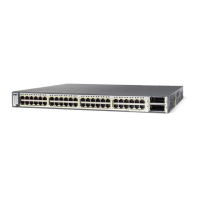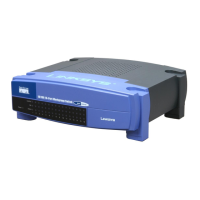Configuring Device Security
Defining Access Control
ESW 500 Series Switches Administration Guide 167
5
• Source Port — Defines the TCP/UDP source port to which the ACE is matched.
This field is active only if 800/6-TCP or 800/17-UDP are selected in the Select
from List drop-down list. The possible field range is 0 - 65535.
• Destination Port — Defines the TCP/UDP destination port. This field is active
only if 800/6-TCP or 800/17-UDP are selected in the Select from List drop-
down list. The possible field range is 0 - 65535.
• TCP Flags — Filters packets by TCP EtherChannel. Filtered packets are either
forwarded or dropped. Filtering packets by TCP EtherChannels increases
packet control, which increases network security.
• ICMP — Indicates if ICMP packets are permitted on the network. The possible
field values are as follows:
• ICMP Code — Indicates and ICMP message code for filtering ICMP packets.
ICMP packets that are filtered by ICMP message type can also be filtered by
the ICMP message code.
• IGMP — Filters packets by IGMP message or message types.
• Source IP Address — Matches the source port IP address to which packets are
addressed to the ACE.
• Dest. IP Address — Matches the destination port IP address to which packets
are addressed to the ACE.
• Traffic Class — Indicates the traffic class to which the packet is matched.
• Select either Match DSCP or Match IP:
• Match DSCP — Matches the packet to the DSCP tag value.
• Match IP Precedence — Matches the packet IP Precedence value to the
ACE. Either the DSCP value or the IP Precedence value is used to match
packets to ACLs. The possible field range is 0-7.
• Action — Indicates the action assigned to the packet matching the ACL.
Packets are forwarded or dropped. In addition, the port can be shutdown, a
trap can be sent to the network administrator, or packet is assigned rate
limiting restrictions for forwarding. The options are as follows:
-
Permit
— Forwards packets which meet the ACL criteria.
-
Deny
— Drops packets which meet the ACL criteria.
-
Shutdown
— Drops packet that meets the ACL criteria, and disables the
port to which the packet was addressed. Ports are reactivated from the
Port Management
page.
